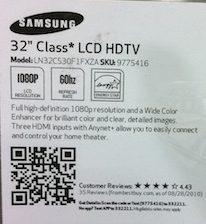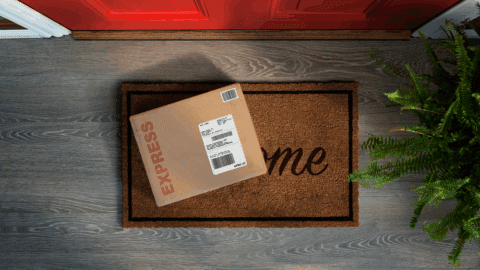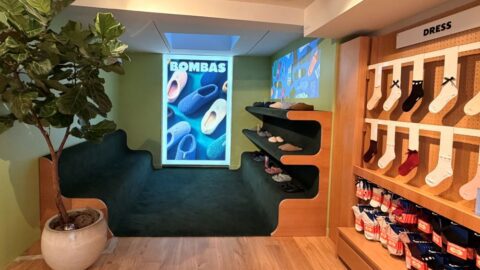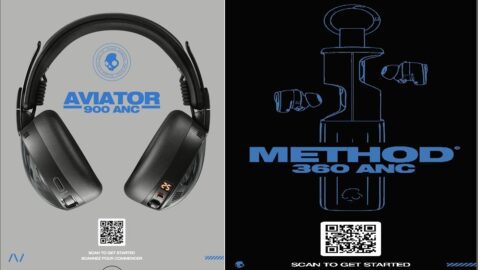Smart phone technology has given way to a new channel through which to communicate with shoppers and enable commerce. The fascination around mobile for retail started with mobile marketing and the ability to communicate via SMS text messaging, and very soon graduated to mobile commerce, which is widely regarded as an additional shopping channel that many retailers are seeing grow at a rapid pace. Now Quick Response (QR) code scanning is giving retailers including Macy’s, Target and Best Buy a competitive edge.
In late February, Macy’s announced its plans to supplement its “Backstage Pass” campaign with customized QR code and SMS technology to deliver exclusive and engaging video content to users’ mobile phones. The retailer is leveraging QR codes to extend its brand by bringing celebrity designers and fashion authorities more directly into every store location nationwide. Macy’s Backstage Pass offers consumers essential tips, information on the latest trends, advice and inspiration straight from their favorite style icons, according to a company press release. Macy’s Backstage Pass codes offer 30-second films to users’ mobile phones that provide fashion inspiration, advice and tips.

The usage of QR codes is soaring. In February, Mobio Identity Systems, Inc., an international mobile payments and marketing company released a report on QR code adoption called The Naked Facts. The report covers the last 6 months of 2010 and shows an astounding 1200% increase in QR code scanning across North America.
“With the increasing popularity of mobile web access, QR codes are becoming an integral component to any successful email marketing strategy,” noted David Dorf, Senior Director of Technology Strategy for Oracle Retail, in the company’s Insight-Driven Retailing Blog.
Retail TouchPoints recently reported on several retailers implementing Microsoft Tag technology, as shoppers at CVS and Walgreens, among many other stores, are now able to use their smart phones to scan Microsoft Tag 2D barcodes on Herbal Essences products. The Tags are designed as shelf talkers that provide information to help shoppers decide which hair care product to purchase. Herbal Essences rolled out the campaign to more than 53,000 stores in the U.S. including food stores, drug stores, mass merchants, dollar stores and office supply stores.
“At their core, QR Codes are a link to online content,” said Jeff Weidauer, VP of Marketing and Strategy, Vestcom, a data management and programming resources technology proprietor. “Shoppers want to know more about the products they buy, and offering information at the shelf edge via QR Codes is a great way to provide that additional information.”
QR codes present a unique value proposition for retailers, as they are an open-source and freely licensed standard. The ability to provide consumers with a digital supplement to printed materials that can be scanned via free readers offers retailers yet another touch point through which to leverage smart phone technology. To that end, Target is seizing the opportunity to integrate QR codes into its print advertising. The retailer has embedded them in print ads to provide an engaging experience. By using the ScanLife scanner application, readers can scan the code and are taken to a video featuring stylist expert Sabrina Soto, who shares information and tips on how to use Target furnishings and products from home décor.
Engagement At the Shelf
During a time when online retail is booming, retailers are pulling out all the stops to bring shoppers back into the store. Engaging technology in-store is helping retailers competitively differentiate themselves. QR codes offer the potential to establish a new form of interactivity and dialogue between the consumer and retailer.
“By placing QR codes on shelf, as well as on product packaging and on promotions throughout the store, brands and retailers are able to engage with their consumers through their mobile devices,” said Laura Marriott, CEO of NeoMedia, a QR code technology platform provider. “By simply using the camera phone to click on the code, consumers are able to discover a whole new form of interactivity, by connecting them to the product web site, comparative shopping applications, contests/trivia, or even direct to a call center to have their questions answered.” Consumers can access numerous types of information via QR codes, including nutritional information and comparative shopping details; shoppers also can potentially build a virtual shopping cart.
One of the leaders in the implementation of QR codes, Best Buy has taken this idea to a new level by integrating QR codes with product fact tags. The electronics retailer became the first national retailer in the U.S. to embrace the trend in September 2010. Best Buy shoppers can view and compare key product features more visually, as well as access reviews and email product information to friends.
QR codes also can give retailers control over the information shoppers receive about a product while shopping. “To thwart consumers from scanning product barcodes, we used Store Inventory Management to print QR codes on shelf labels then provided access to a scanner in the Store Gateway iPhone app,” said Dorf, in a blog explaining the company’s demonstrations during the National Retail Federation (NRF) convention in January 2011. “When the consumer scans the shelf label they are shown product information provided by the retailer.”
Learning More About Loyal Scanners
As with any engaging, opt-in technology, retailers have the opportunity to learn more about customer preferences and shopping habits via QR codes. “Tying a shopper’s mobile phone to a loyalty program — through an app, for example — could allow customized offers to be presented through the use of QR codes at the shelf,” Weidauer noted.
“QR Codes can be linked to online content, and that link can be changed,” Weidauer continued. “This means that the information offered can be changed as needed. If it’s tied to a loyalty program, the information provided to one shopper could be different from another based on shopping history and segmentation rules. Content can be anything: videos, recipes, cross-sell offers, food safety info, you name it.” Retailers can then leverage the data gathered from shopper scans to be aggregated and utilized to create more compelling and relevant offers for shoppers.
Marketing Metrics Via Mobile
Digby, a mobile commerce platform provider, recently launched its In-Store Mobile Module, which includes a QR capability designed to give retailers the opportunity to give customers access to relevant, timely and localized promotional offers and touch points within a retailer’s branded application. After entering a store and checking in, a customer can scan a QR code and link to any number of offers or responses generated by the retailer.
“QR Codes benefit both the retailer and the consumer as retailers now have the mobile tools they need to track, measure and understand consumer shopping patterns while in-store and consumers are empowered to make more educated purchase decisions through increased product knowledge, ratings and reviews,” said Dan Lowden, VP Marketing at Digby.
Lowden said that many of Digby’s 45 retail partners already are using QR code scanning as part of their marketing strategies in catalogs and in-store. “For many of our retailers [clients], their brick and mortar stores still account for over 90% of sales, so if they can learn more about customers while in-store through rich analytics they can track and understand consumer behavior when in-store. Retailers will now be able to create and manage in-store campaigns that link relevant messages and offers to customer mobile activities.” Each time a consumer checks in, scans a barcode or a QR code, or takes a store exit survey, the retailer can measure and analyze that activity.













